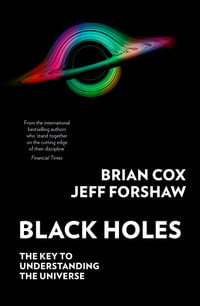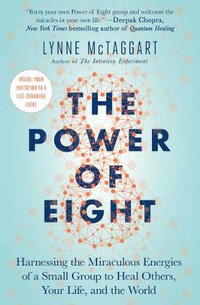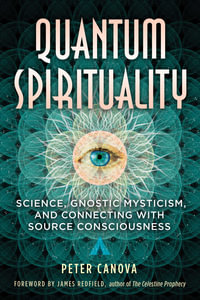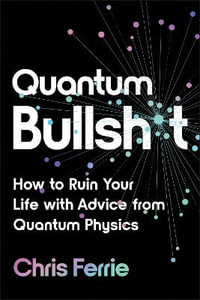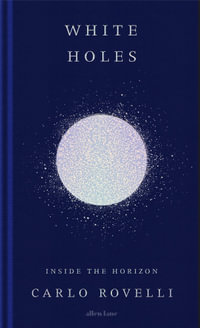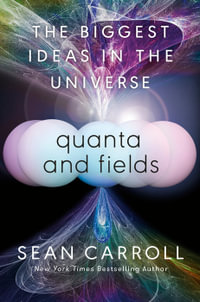| Foreword | p. vii |
| Preface | p. xiii |
| Acknowledgments | p. xvii |
| Emergence and Complexity | p. 1 |
| A Quantum Origin of Life? | p. 3 |
| Chemistry and Information | p. 5 |
| Q-life | p. 6 |
| The Problem of Decoherence | p. 9 |
| Life as the "Solution" of a Quantum Search Algorithm | p. 11 |
| Quantum Choreography | p. 13 |
| References | p. 16 |
| Quantum Mechanics and Emergence | p. 19 |
| Bits | p. 20 |
| Coin Flips | p. 20 |
| The Computational Universe | p. 22 |
| Generating Complexity | p. 25 |
| A Human Perspective | p. 28 |
| A Quantum Perspective | p. 29 |
| References | p. 29 |
| Quantum Mechanisms in Biology | p. 31 |
| Quantum Coherence and the Search for the First Replicator | p. 33 |
| When did Life Start? | p. 33 |
| Where did Life Start? | p. 34 |
| Where did the Precursors Come From? | p. 35 |
| What was the Nature of the First Self-replicator? | p. 36 |
| The RNA World Hypothesis | p. 37 |
| A Quantum Mechanical Origin of Life | p. 39 |
| The dynamic combinatorial library | p. 40 |
| The two-potential model | p. 42 |
| Decoherence | p. 44 |
| Replication as measurement | p. 44 |
| Avoiding decoherence | p. 45 |
| Summary | p. 47 |
| References | p. 47 |
| Ultrafast Quantum Dynamics in Photosynthesis | p. 51 |
| Introduction | p. 51 |
| A Coherent Photosynthetic Unit (CPSU) | p. 53 |
| Toy Model: Interacting Qubits with a Spin-star Configuration | p. 58 |
| A More Detailed Model: Photosynthetic Unit of Purple Bacteria | p. 63 |
| Experimental Considerations | p. 65 |
| Outlook | p. 66 |
| References | p. 67 |
| Modelling Quantum Decoherence in Biomolecules | p. 71 |
| Introduction | p. 71 |
| Time and Energy Scales | p. 73 |
| Models for Quantum Baths and Decoherence | p. 75 |
| The spin-boson model | p. 76 |
| Caldeira-Leggett Hamiltonian | p. 78 |
| The spectral density | p. 79 |
| The Spectral Density for the Different Continuum Models of the Environment | p. 80 |
| Obtaining the Spectral Density from Experimental Data | p. 82 |
| Analytical Solution for the Time Evolution of the Density Matrix | p. 86 |
| Nuclear Quantum Tunnelling in Enzymes and the Crossover Temperature | p. 87 |
| Summary | p. 90 |
| References | p. 91 |
| The Biological Evidence | p. 95 |
| Molecular Evolution: A Role for Quantum Mechanics in the Dynamics of Molecular Machines that Read and Write DNA | p. 97 |
| Introduction | p. 97 |
| Background | p. 98 |
| Approach | p. 100 |
| The information processing power of a molecular motor | p. 102 |
| Estimation of decoherence times of the motor-DNA complex | p. 103 |
| Implications and discussion | p. 105 |
| References | p. 106 |
| Memory Depends on the Cytoskeleton, but is it Quantum? | p. 109 |
| Introduction | p. 109 |
| Motivation behind Connecting Quantum Physics to the Brain | p. 111 |
| Three Scales of Testing for Quantum Phenomena in Consciousness | p. 113 |
| Testing the QCI at the 10 nm-10 [mu]m Scale | p. 115 |
| Testing for Quantum Effects in Biological Matter Amplified from the 0.1 nm to the 10 nm Scale and Beyond | p. 117 |
| Summary and Conclusions | p. 120 |
| Outlook | p. 121 |
| References | p. 121 |
| Quantum Metabolism and Allometric Scaling Relations in Biology | p. 127 |
| Introduction | p. 127 |
| Quantum Metabolism: Historical Development | p. 131 |
| Quantization of radiation oscillators | p. 131 |
| Quantization of material oscillators | p. 132 |
| Quantization of molecular oscillators | p. 133 |
| Material versus molecular oscillators | p. 135 |
| Metabolic Energy and Cycle Time | p. 136 |
| The mean energy | p. 137 |
| The total metabolic energy | p. 138 |
| The Scaling Relations | p. 140 |
| Metabolic rate and cell size | p. 140 |
| Metabolic rate and body mass | p. 140 |
| Empirical Considerations | p. 141 |
| Scaling exponents | p. 142 |
| The proportionality constant | p. 144 |
| References | p. 144 |
| Spectroscopy of the Genetic Code | p. 147 |
| Background: Systematics of the Genetic Code | p. 147 |
| RNA translation | p. 149 |
| The nature of the code | p. 151 |
| Information processing and the code | p. 154 |
| Symmetries and Supersymmetries in the Genetic Code | p. 156 |
| sl(6/1) model: UA+S scheme | p. 158 |
| sl(6/1) model: 3CH scheme | p. 161 |
| Dynamical symmetry breaking and third base wobble | p. 164 |
| Visualizing the Genetic Code | p. 168 |
| Quantum Aspects of Codon Recognition | p. 174 |
| N(34) conformational symmetry | p. 175 |
| Dynamical symmetry breaking and third base wobble | p. 177 |
| Conclusions | p. 180 |
| References | p. 181 |
| Towards Understanding the Origin of Genetic Languages | p. 187 |
| The Meaning of It All | p. 187 |
| Lessons of Evolution | p. 190 |
| Genetic Languages | p. 193 |
| Understanding Proteins | p. 195 |
| Understanding DNA | p. 201 |
| What Preceded the Optimal Languages? | p. 204 |
| Quantum Role? | p. 211 |
| Outlook | p. 215 |
| References | p. 217 |
| Artificial Quantum Life | p. 221 |
| Can Arbitrary Quantum Systems Undergo Self-replication? | p. 223 |
| Introduction | p. 223 |
| Formalizing the Self-replicating Machine | p. 225 |
| Proof of No-self-replication | p. 226 |
| Discussion | p. 227 |
| Conclusion | p. 228 |
| References | p. 229 |
| A Semi-quantum Version of the Game of Life | p. 233 |
| Background and Motivation | p. 233 |
| Classical cellular automata | p. 233 |
| Conway's game of life | p. 234 |
| Quantum cellular automata | p. 237 |
| Semi-quantum Life | p. 238 |
| The idea | p. 238 |
| A first model | p. 239 |
| A semi-quantum model | p. 242 |
| Discussion | p. 244 |
| Summary | p. 247 |
| References | p. 248 |
| Evolutionary Stability in Quantum Games | p. 251 |
| Evolutionary Game Theory and Evolutionary Stability | p. 253 |
| Population setting of evolutionary game theory | p. 256 |
| Quantum Games | p. 256 |
| Evolutionary Stability in Quantum Games | p. 261 |
| Evolutionary stability in EWL scheme | p. 263 |
| Evolutionary stability in MW quantization scheme | p. 268 |
| Concluding Remarks | p. 286 |
| References | p. 288 |
| Quantum Transmemetic Intelligence | p. 291 |
| Introduction | p. 291 |
| A Quantum Model of Free Will | p. 294 |
| Quantum Acquisition of Knowledge | p. 298 |
| Thinking as a Quantum Algorithm | p. 300 |
| Counterfactual Measurement as a Model of Intuition | p. 301 |
| Quantum Modification of Freud's Model of Consciousness | p. 304 |
| Conclusion | p. 306 |
| References | p. 307 |
| The Debate | p. 311 |
| Dreams versus Reality: Plenary Debate Session on Quantum Computing | p. 313 |
| Plenary Debate: Quantum Effects in Biology: Trivial or Not? | p. 349 |
| Nontrivial Quantum Effects in Biology: A Skeptical Physicists' View | p. 381 |
| Introduction | p. 381 |
| A Quantum Life Principle | p. 382 |
| A quantum chemistry principle? | p. 382 |
| The anthropic principle | p. 384 |
| Quantum Computing in the Brain | p. 385 |
| Nature did everything first? | p. 385 |
| Decoherence as the make or break issue | p. 386 |
| Quantum error correction | p. 387 |
| Uselessness of quantum algorithms for organisms | p. 389 |
| Quantum Computing in Genetics | p. 390 |
| Quantum search | p. 390 |
| Teleological aspects and the fast-track to life | p. 392 |
| Quantum Consciousness | p. 392 |
| Computability and free will | p. 392 |
| Time scales | p. 394 |
| Quantum Free Will | p. 395 |
| Predictability and free will | p. 395 |
| Determinism and free will | p. 396 |
| References | p. 398 |
| That's Life!-The Geometry of [pi] Electron Clouds | p. 403 |
| What is Life? | p. 403 |
| Protoplasm: Water, Gels and Solid Non-polar Regions | p. 405 |
| Van der Waals Forces | p. 407 |
| Kekule's Dream and [pi] Electron Resonance | p. 409 |
| Proteins-The Engines of Life | p. 413 |
| Anesthesia and Consciousness | p. 418 |
| Cytoskeletal Geometry: Microtubules, Cilia and Flagella | p. 419 |
| Decoherence | p. 423 |
| Conclusion | p. 425 |
| References | p. 427 |
| Quantum Computing in DNA [pi] Electron Stacks | p. 430 |
| Penrose-Hameroff Orch OR Model | p. 432 |
| Index | p. 435 |
| Table of Contents provided by Ingram. All Rights Reserved. |

